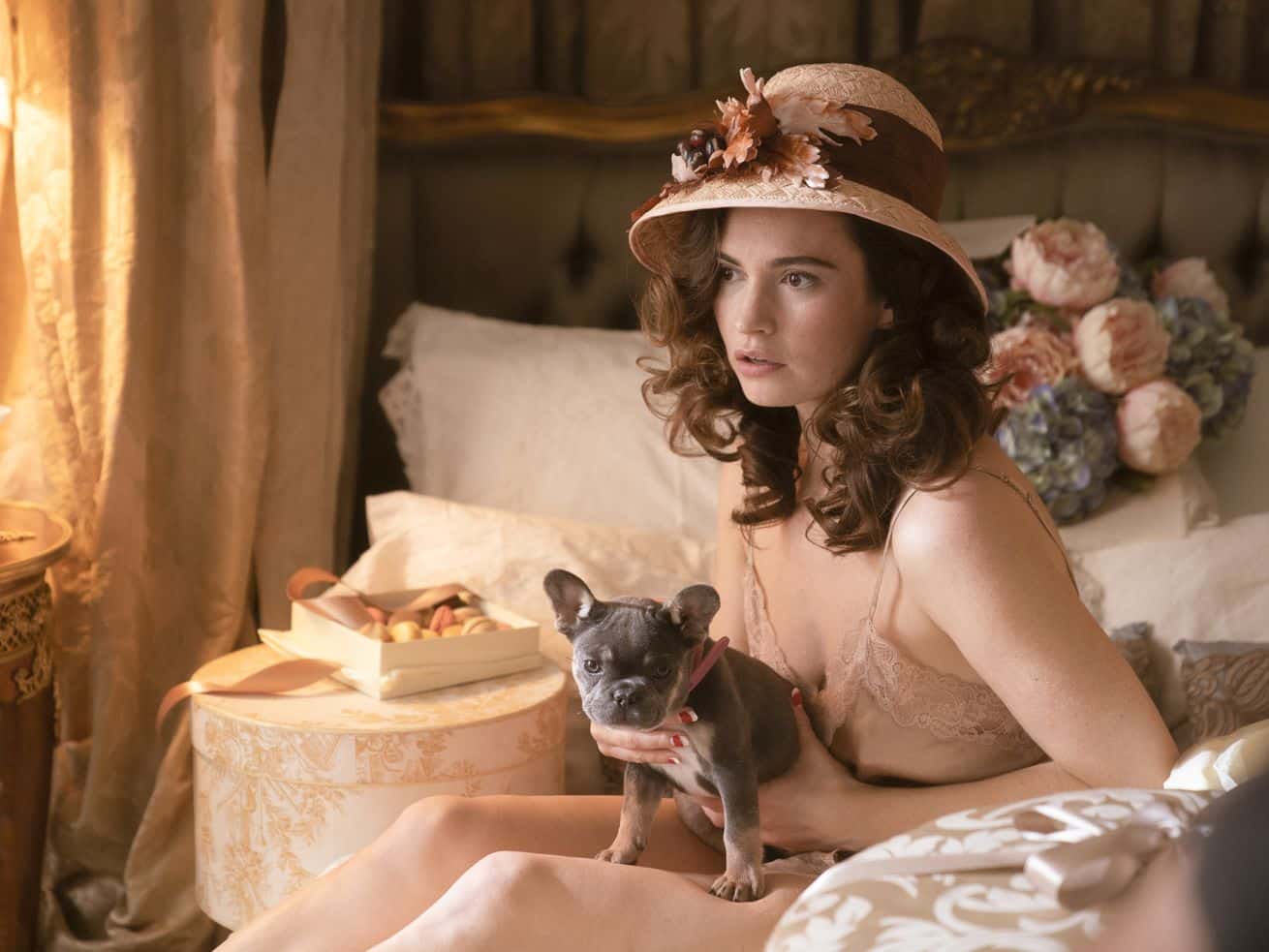The family with three Nazis, two socialists, and a duchess, explained.
There’s something about the Mitford family — that famous family of Nazis and communists, satirists and journalists who became the fascination of English society in the mid-20th century — that feels perfect for this moment.
The past decade of political polarization shows no sign of abating, and it continues to turn not just countries but families against each other. Once-in-a-lifetime natural disasters are becoming once-a-decade disasters in the wake of catastrophic climate change. The world is fundamentally reorganizing itself before our eyes, and in such a destabilizing moment, there is something useful in looking at a family who found its world, too, shifting and changing in ways none of them could have predicted. And who exemplifies that situation better than the Mitfords?
The Mitfords were a family of very minor English aristocrats who nonetheless became the center of the so-called Mitford industry in England from the 1930s on. There are Mitford documentaries, Mitford biographies, even a Mitford musical. Their scandalous escapades seemed to function as the reality TV drama of their era, even as they made real political and artistic contributions to the world.
When we talk about the Mitfords, we are principally interested in the six sisters who came of age on their parents’ country estate between the two world wars: Nancy, Pamela, Diana, Unity, Jessica, and Deborah. (There was a brother, too, Thomas, but we need not concern ourselves with him. He was the Robert Kardashian of the family.)
Of these six Mitford sisters, three became Nazis, one became a socialist journalist, one a liberal satirical novelist who informed on her Nazi sisters, and one a duchess. Considering the Mitfords now feels like one of those “tag yourself” memes: As global chaos rises and politics become polarized, which one are you?
Currently, the Mitfords are back in vogue because of Nancy, the novelist. Amazon Prime is releasing a new TV adaptation of Mitford’s 1945 novel The Pursuit of Love, written and directed by Emily Mortimer and starring Lily James. Mitford’s Pursuit of Love is one of the great postwar English novels: It’s a flinty-eyed romance that never condescends to be sweet but fairly glitters with good humor all the same. Mortimer’s Pursuit of Love, however, is not a successful adaptation. It lacks the witty, bitchy sparkle that characterizes the novel, and it organizes itself around an oddly didactic set of ideas about the economic plight of women in the midcentury.
But the new Pursuit of Love does provide us with an opportunity to consider what remains valuable about The Pursuit of Love — and, by extension, what is valuable about the history of the Mitfords altogether. That’s the sensibility that breathes through their best work: a sense of joy and play that continues through brutal, bloody moments of history.
/cdn.vox-cdn.com/uploads/chorus_asset/file/22733364/3372956.jpg) Hulton Archive/Getty Images
Hulton Archive/Getty ImagesJessica Mitford — a journalist and ultimately the family’s resident socialist — begins her 1960 memoir Hons and Rebels with a striking image of her childhood home. “In the windows, still to be seen, are swastikas carved into the glass with a diamond ring,” she writes, “and for every swastika a carefully delineated hammer and sickle.” The swastikas come from Unity, who adored Hitler; the hammer and sickle were Jessica’s addition.
Unity first learned about Hitler and fascism through her older sister Diana, the family beauty. Diana left her first husband in 1932 for Sir Oswald Mosley, leader of the British Union of Fascists, which both Diana and Unity happily embraced. Such was Unity’s fascination with Adolf Hitler that, in 1933, she traveled to Germany with the stated intention of learning German and meeting the then chancellor. Within six months, she accomplished both. (Her strategy, she wrote, was to go to the restaurant where she knew Hitler often ate and stare at him until he asked what her deal was.) Rapidly, Unity became part of Hitler’s inner circle. In 1939, when Britain declared war on Germany, she shot herself in the head. Although she survived, the bullet remained lodged in her brain, and her mental health would never recover. She died in 1948.
Diana, too, was devoted to Nazism. She married Mosley in 1936 in Joseph Goebbels’s living room, with Hitler a guest of honor. In 1940, after the war broke out, she was arrested for her ties to Hitler and would spend three years in prison, then remain under house arrest until the end of the war.
Diana was arrested, in part, because of Nancy, who informed on her Nazi sisters to the British authorities. “She is a ruthless and shrewd egotist, a devoted fascist and admirer of Hitler and sincerely desires the downfall of England and democracy in general,” Nancy told MI5 of Diana. Nancy also warned authorities of her sister Pamela, whom Nancy said was a virulent anti-Semite. Pamela and her husband, Nancy wrote, “had been heard to declare a) that all Jews in England should be killed and b) that the war should be stopped now ‘before we lose any more money.’”
Both Diana and Pamela, however, lived out their postwar lives without major incident. They were not, we might say now, really “canceled.” Diana died in 2003 in Paris, aged 93, leaving behind a diamond swastika. Pamela, one of the two quietest Mitford sisters, died in 1994, aged 86, after having spent the last 40 years of her life living on a country estate as the lover of an Italian horsewoman. (Deborah, the other quiet one, married a duke and devoted her life to caring for his stately home.)
While Nancy made the choice to inform on her Nazi sisters, she was not the most politically far left of the Mitfords. In Hons and Rebels, the family joke for years was that Nancy was a drawing room pink who affected progressive politics as a fashionable pose, whereas Jessica was a ballroom communist: She kept her small library of communist literature in the ballroom — there being no better storage space in their London residence — and she was serious about it. She used to fantasize about convincing Unity to introduce her to Hitler and then immediately shooting him in the head.
/cdn.vox-cdn.com/uploads/chorus_asset/file/22733381/71984186.jpg) Keystone/Hulton Archive/Getty Images
Keystone/Hulton Archive/Getty ImagesAt age 19, Jessica eloped with her second cousin, a nephew of Winston Churchill named Esmond Romilly. The couple ran away to Spain to aid the cause of anti-fascism in the Spanish Civil War but were deported after the horrified Mitford parents pulled strings to get Jessica out of the war zone. Briefly, they reported on the war from France for a British paper, the News Chronicle, before relocating to America, penniless, with Jessica no longer on speaking terms with either Unity or Diana.
Esmond and Jessica’s marriage was cut short by the start of World War II. Esmond enlisted in the Royal Canadian Air Force and died in action in 1941 at 23 years old, leaving Jessica alone with a newborn baby in a foreign country. She would eventually remarry, throw herself into the American civil rights movement, and stake out a career for herself as a muckraking investigative journalist.
But it was because of Nancy, Jessica would eventually conclude, that the English public became fascinated with the Mitfords, reaching its peak in the 1970s but arguably continuing today. (The last big Mitford biography came out in 2016.) “It was, of course, Nancy who started it all,” Jessica writes in her 1981 foreword to The Pursuit of Love. “Without her, there would be no Mitford industry. If only she could have lived to see the unlikely fruits of her early endeavors. ‘How I shrieked,’ she would have said.”
/cdn.vox-cdn.com/uploads/chorus_asset/file/22733387/518884391.jpg) Thurston Hopkins/Picture Post/Hulton Archive/Getty Images
Thurston Hopkins/Picture Post/Hulton Archive/Getty ImagesNancy published her first novel in 1931 at age 27. It’s titled Highland Fling, and it’s a bonbon of a book: a witty satire about Nancy’s friends and family, thinly disguised beneath fictional nicknames only slightly more absurd than the nicknames they went by in real life. (Unity’s fictional name is Euphegenia; her real-life nickname was Boud. I ask you!) Soon after Highland Fling came 1932’s Christmas Pudding, which was a variation on the same theme. But with 1935’s Wigs on the Green, Nancy’s books began to change.
Wigs on the Green is still a satire of Nancy’s social set, but since that social set had come to include avowed Nazis and avowed communists, so does the novel: It skewers Diana’s courtship with the fascist Mosley, and Unity’s budding fascism. (Diana eventually forgave Nancy for the book, but Unity never did.) By the time she released Pigeon Pie in 1940, Nancy was writing light social satire about the war. The heroine of Pigeon Pie is an English aristocrat who transforms herself into a Beautiful Female Spy to fight the fascists.
Pigeon Pie flopped, and Nancy turned her attention to the war effort. She went to the south of France to volunteer with relief organizations for refugees from the Spanish Civil War, went back to London to work as a driver and first aid worker, and — having thoroughly committed herself to the cause of anti-fascism, if not socialism — informed on her sisters to MI5.
Eventually, Nancy went back to novel writing, and in 1945, she published The Pursuit of Love, considered by critics to be her first great novel. It arrived in post-war England like a gift: a frothy, fizzy romantic comedy about the rich and their foibles, shot through with an unmistakable note of melancholy. The Pursuit of Love tells the story of Linda, an aristocrat who grew up in a family quite like the Mitfords, only with fewer fascists, and her three love affairs: a disastrous marriage to a Nazi-leaning Tory banker; a likewise disastrous marriage to an aristocratic communist; and, at last, a great and scandalous love with an anti-fascist French duke. Both of the political extremes are filled with bores and fools, but in the center, where Linda finds herself, there is the possibility of a life of beauty and pleasure and joy.
When war comes it destroys everything, but Linda maintains no regrets. “Don’t pity me,” she tells her best friend and cousin, Fanny. “I’ve had eleven months of perfect and unalloyed happiness, very few people can say that, in the course of long long lives, I imagine.”
The Pursuit of Love was an instant bestseller that established Nancy as one of postwar England’s major novelists. And Nancy’s next novel, 1949’s Love in a Cold Climate, which featured some of the same characters and country houses as Pursuit of Love, would enjoy a similar reception.
These two books are now considered Canonical Mitford, the works at the center of the Mitford industry. Nancy’s later novels would divide critics, her earlier novels are considered trifles, and the literary biographies she turned to in the 1950s were admired on publication but are now little remembered. But the Love duology is irresistible stuff, merciless to its characters but affectionate toward the absurd world in which they exist. “Aren’t these people absolute idiots?” the books seem to ask. “And isn’t their way of life really the only gracious and humane way to live?”
Such is the enormous charm of the Love duology that it has powered an entire industry of fascination with the Mitfords — the charm of those novels, and the political extremes of the world in which they were produced.
There’s an astonishing disparity between the charm of the Mitford industry and the violence of the world that produced it. The Mitford industry is founded on the bright and inconsequential chatter of this group of sisters: so frivolous, so fun. They were raised to be socialites, to sparkle and entertain at pointless society dinners and balls. Instead, they found themselves enmeshed in one of the bloodiest and most brutal conflicts of human history, connected to all the key players.
It felt, it seems clear, as though the whole thing were a game at first: One sister carves swastikas into the window, so the other carves in hammers and sickles to get her own back, the same way other siblings might hang up pennants for rival sports teams. The violence and the horror of what was beginning to happen didn’t seem to be quite clear to any of the Mitfords until the Spanish Civil War had begun.
So instead of centering their drawing room conversations on historical irrelevancies, as they might have assumed would be their duty as minor society figures of no particular wealth or status, they were centering those conversations on the figures who would shape European and American politics throughout the wars and beyond. They were in the middle of a deadly serious conflict that would kill millions, including their own loved ones, and, ultimately, tear the family into pieces. Yet even in the midst of the reality of the war, the sisters’ letters and Jessica’s memoirs and Nancy’s novels continue to sparkle, to shine, to charm.
Nancy died in 1973 of Hodgkin’s lymphoma. “It’s very curious dying and would have many a drole, amusing & charming side were it not for the pain,” she wrote to a friend in her final months. “We had screams over the Will.” That is, perhaps, what is most striking and most valuable in the Mitford industry: the cynical and self-mocking determination to find the droll, amusing, and charming, whether in the midst of incredible political tumult or in the face of immense pain.
Author: Constance Grady
Read More



